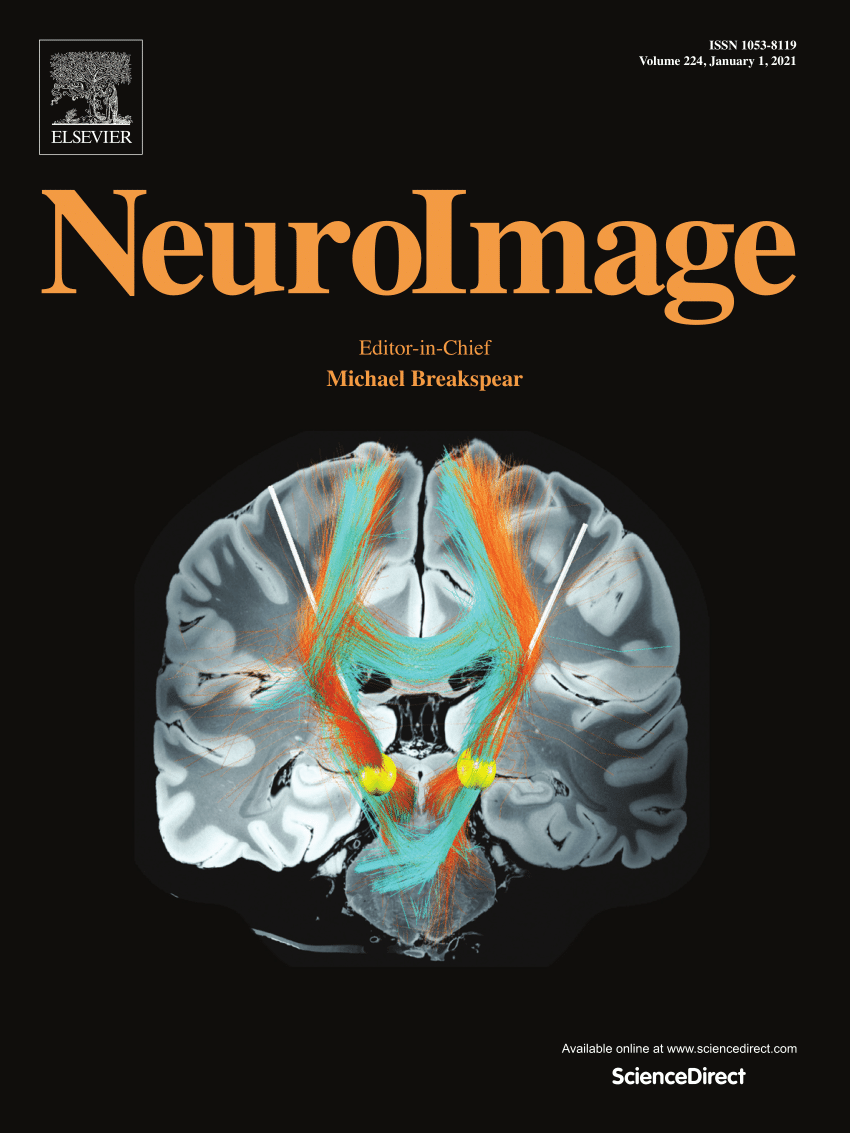Longitudinal changes of blood-brain barrier and transcytolemmal water exchange permeability in Alzheimer's disease mice: A non-contrast MRI study
IF 4.7
2区 医学
Q1 NEUROIMAGING
引用次数: 0
Abstract
Growing evidence suggests that Alzheimer's disease (AD) has been linked with the dysfunction of glymphatic system. Previous studies were primarily cross-sectional and focused on only one specific component, hindering the understanding of overall glymphatic function in AD. We evaluated the longitudinal changes in multiple components of glymphatic system (blood-brain barrier (BBB) and transcytolemmal water exchange (TWE) permeability) in AD mice. Five female wild-type and four 3 × Tg-AD mice from 5 to 13 months of age were scanned monthly using two non-contrast MRI techniques, water-extraction-with-phase-contrast-arterial-spin-tagging (WEPCAST) and diffusion-time-dependent kurtosis imaging (tDKI), yielding BBB and TWE permeability. Immunostaining was used to evaluate tight junction proteins associated with BBB structural integrity, aquaporin 4 (AQP4) related to TWE, and AQP4 perivascular space (PVS) polarization that might represent PVS-parenchyma water exchange. The relationship between glymphatic function and AD pathology, as measured by amyloid beta (Aβ) and tau deposition, was also explored. Our results revealed significantly increased BBB and hippocampal TWE permeability in AD mouse brains, consistent with the histological findings of reduced tight junction proteins and upregulated AQP4, which were correlated with each other and can be predictive of Aβ and tau deposition. Impaired AQP4 PVS polarization was also found in AD mice. In conclusion, water exchange in multiple components of glymphatic system altered in AD mice, and these in vivo MRI findings were validated pathologically, which might affect the waste clearance in the glymphatic neurofluid.

阿尔茨海默病小鼠血脑屏障和经细胞膜水交换通透性的纵向变化:一项非对比MRI研究。
越来越多的证据表明,阿尔茨海默病(AD)与淋巴系统功能障碍有关。以前的研究主要是横断面的,只关注一种特定的成分,阻碍了对AD中整体淋巴功能的理解。我们评估了AD小鼠淋巴系统多个组成部分(血脑屏障(BBB)和经细胞乳水交换(TWE)渗透性)的纵向变化。5 ~ 13月龄的5只雌性野生型和4只3 × Tg-AD小鼠每月使用两种非对比MRI技术,水提取-相位对比-动脉自旋标记(WEPCAST)和扩散时间依赖性峰度成像(tDKI)进行扫描,获得BBB和TWE渗透率。免疫染色评价与血脑屏障结构完整性相关的紧密连接蛋白,与TWE相关的水通道蛋白4 (AQP4),以及可能代表PVS-实质水交换的AQP4血管周围空间(PVS)极化。通过β淀粉样蛋白(Aβ)和tau沉积测量,还探讨了淋巴功能与AD病理之间的关系。我们的研究结果显示,AD小鼠脑血脑屏障和海马TWE通透性显著增加,这与紧密连接蛋白减少和AQP4上调的组织学发现一致,它们相互关联,可以预测Aβ和tau沉积。在AD小鼠中也发现AQP4 PVS极化受损。综上所述,AD小鼠淋巴系统多组分的水交换发生改变,这些体内MRI结果得到病理证实,这可能影响淋巴神经液中的废物清除。
本文章由计算机程序翻译,如有差异,请以英文原文为准。
求助全文
约1分钟内获得全文
求助全文
来源期刊

NeuroImage
医学-核医学
CiteScore
11.30
自引率
10.50%
发文量
809
审稿时长
63 days
期刊介绍:
NeuroImage, a Journal of Brain Function provides a vehicle for communicating important advances in acquiring, analyzing, and modelling neuroimaging data and in applying these techniques to the study of structure-function and brain-behavior relationships. Though the emphasis is on the macroscopic level of human brain organization, meso-and microscopic neuroimaging across all species will be considered if informative for understanding the aforementioned relationships.
 求助内容:
求助内容: 应助结果提醒方式:
应助结果提醒方式:


